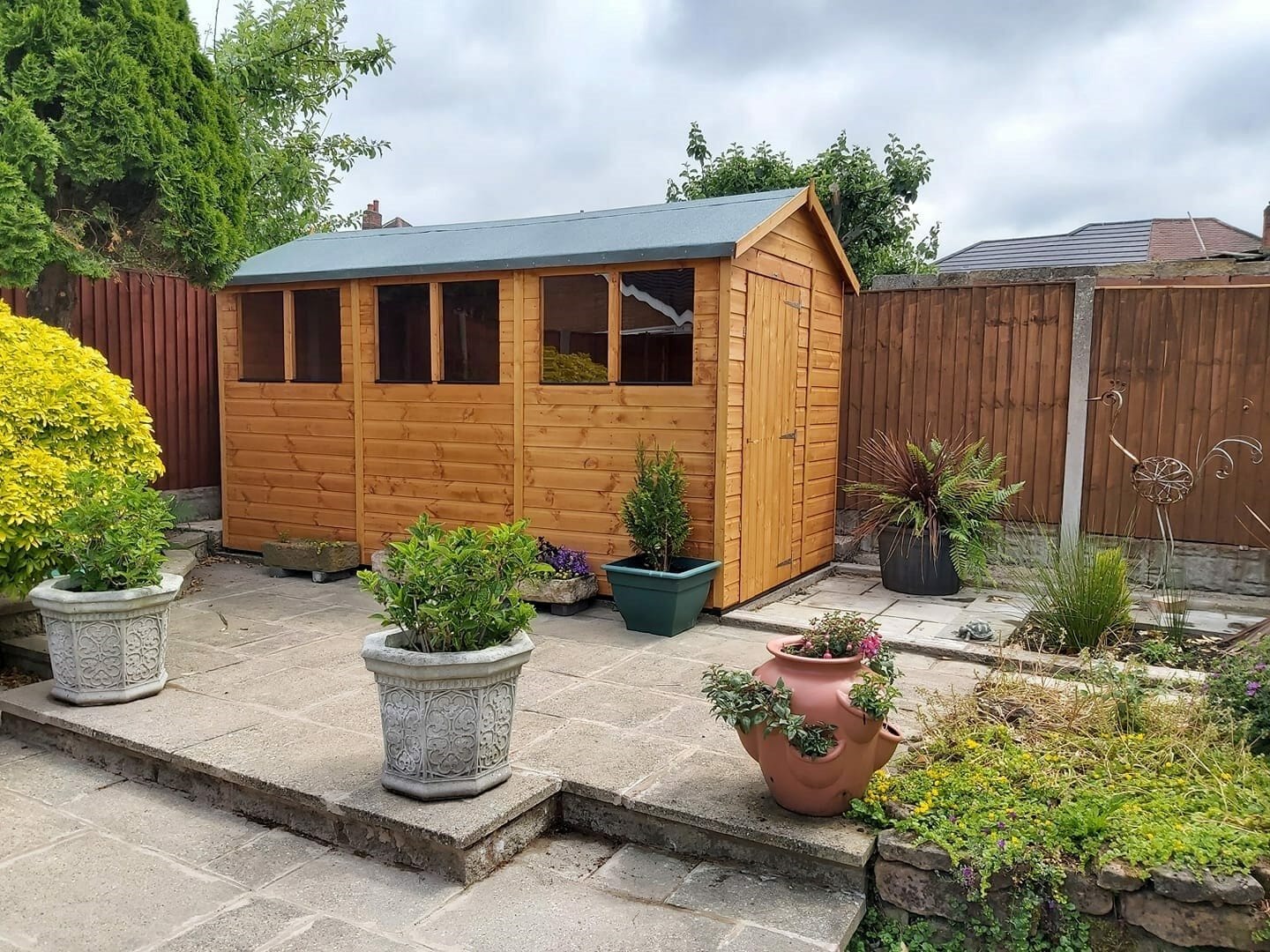Do I Need Planning Permission for a Shed?
Making big changes to your home requires a lot of consideration; one such thing that should be considered is planning permission. If you’re having an extension, loft conversion or conservatory, it’ll most likely be on your list of things to sort out, but is it the same when it comes to installing a new shed in your garden?
Some projects on your property will require planning permission from the local authority. In this article, we’re going to look at the different planning regulations around sheds and garden buildings, helping you ensure you’re not causing any potential problems for yourself or, even worse, upsetting the neighbours!
How Big Can I Build a Shed Without Planning Permission?
Adding a shed to your garden can be the ideal way to create an outdoor storage solution or even make a new space for work or leisure activities, and the good news is that most sheds won’t require any sort of planning permission in order to be legally constructed in your garden. However, there are some limits when it comes to the size of your shed that should be remembered when you’re planning.
What is the Maximum Shed Size Without Planning Permission?
When it comes to the size of your shed, the guidelines are as follows:
- Must be one storey high only
- Eave heights must not exceed 2.5m
- Overall height must not exceed 4m (dual pitched roof) or 3m (any other roof)
- Maximum height of 2.5m if the shed is within 2m of a dwelling boundary
- No raised platforms, verandas, or balconies
- The shed must not cover more than half of the area surrounding the house
- The shed must not be touching more than 15m of ground
The great news is that all Power Sheds products are under the minimum height specifications of 3m that would require planning permission, meaning whether you’re purchasing one of our Apex or Pentsheds or a Summerhouse, you can rest assured that you won’t have to take the extra time to apply for planning permission.
When it comes to ground coverage, the size of the shed you choose to purchase will make the difference. For instance, if you choose a large shed for your property, you’ll have to pay close attention to the regulation around covering more than 15m of ground. Again, with most regular sized garden sheds this shouldn’t be an issue, it’s only something that could come into consideration if you’ve purchased something that’s much larger than the ‘average’ shed.
How Close Can a Shed Be to a Fence or Neighbours House in the UK?
Positioning your shed is a very important factor; not only will it affect the practicality of your whole garden, but you may also be looking at other factors such as where gets the most sunshine if you’ve purchased a summerhouse. Most gardens come with a fence or wall that separates your property from that of your neighbours, so it’s important to keep this in mind.
When choosing the placement of the shed, there are certain rules that must be followed in order to ensure you’re not breaking any of the planning permission rules. This means that, according to UK regulations, your shed must sit 2 metres from the boundary of your property, whether that’s a fence or a wall.
If you’re planning on placing your shed near a fence or wall that sits within the boundary of your property, for example a fence that isn’t on the border of your property, then it’d still be advised to position your shed in a way that means you can get access all the way around it. This is especially important if you need to make repairs or paint the shed.
Planning Permission for Log Cabins
Log cabins are often associated with being slightly bigger than your average garden shed, so it’d be understandable if you’re thinking “do I need planning permission for my log cabin?”.
Do You Need Planning Permission for a Log Cabin?
As far as log cabins are concerned, the rules around height and proximity to neighbouring properties are exactly the same as those for a shed. If your log cabin is taller than 2.5 metres you would need to apply for planning permission, or at least speak with your local authority. The great news is that all Power Sheds log cabins are under 2.5 metres in height – meaning you won’t need to worry about planning.
Log cabins are sometimes used for slightly different things than a garden shed, and that’s something to remember when you’re planning your log cabin. For instance, many people will add sleeping arrangements into their log cabin and effectively turn it into an extension of the home for dwelling. Such a thing would require planning permission, although you don’t need to worry too much if you’re letting the kids camp out there once in a while!
In Conclusion: Do You Need Planning Permission for a Shed?
The rules on planning permission for sheds are relatively straightforward, and the great news is that most average sized garden sheds don’t require any sort of permission. Things can get a little more complex when it comes to bigger structures or other outbuildings such as log cabins, but it’s relatively easy to find out.
The great thing about your new Power Sheds purchase is that, when you come to install your garden shed (https://www.powersheds.com/faqs/how-do-you-assemble-a-power-shed/), our delivery method makes it easy to place in the perfect spot. Being delivered on one single pallet means we can help you get your shed into the perfect part of your garden before you construct, so you won’t have to sacrifice on finding the right place for you.
More details on the planning rules around outbuildings are available on the Government’s Planning Portal.

